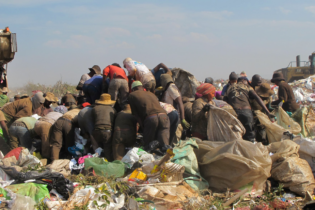Industry aims to drive maximum value of plastics and enhance the reputation of the plastics industry in the eyes of key stakeholders.
The South African plastics industry has set itself the ambitious target of eliminating all plastic from the country’s landfill sites by the year 2030. According to Plastics|SA, the umbrella body representing the entire local plastics industry, a new sustainability objective has been set under the title, ‘Zero plastics to landfill by 2030’, which will greatly influence the plastic industry’s strategic direction over the next 16 years. “Increasingly scarce natural resources and expensive landfill space has pushed recycling to the top of the agenda for all the packaging streams. The plastics industry is leading the charge by setting higher than expected recycling targets and getting industry role-players and government to agree on a combined plan of action,” says Anton Hanekom, Executive Director of Plastics SA. Plastics SA’s Sustainability Council, which comprises various polymer associations, such as PETCO, POLYCO, PSPC, SAVA and the SA Plastics Recycling Organisation (SAPRO) as well as major retailers and industry leaders attended a strategic workshop earlier this year, aimed at developing a united vision and road map for the future of plastic waste in South Africa. At this meeting, the Sustainability Council members voluntarily agreed and committed their organisations to working towards a vision of ‘Zero plastics to landfill by 2030’. While the plastics industry aims to use this target to drive the maximum value of plastics, it also hopes to enhance its reputation in the eyes of key stakeholders. “One of our main objectives is to enhance plastics recycling in South Africa on all levels through an active and ongoing engagement with key stakeholders such as national, provincial and local governmental departments with regards to waste management legislation, regulations and the recent development of the industry Paper and Packaging Industry Waste Management Plan,” Hankom says. “Access to the solid waste stream is essential if we are to succeed in meeting our target, and therefore we are calling for ‘separation at source’ in order to increase the recycling rate of plastics”.
Seven key areas of improvement and development were identified in order to align the plastics industry’s objectives with the targets set out by the Government’s National Development Plan. These include:
1. Developing an effective infrastructure across the value chain
2. Ensuring ongoing research and development into new technologies and markets
3. Establishing credible data sources and information sharing across the value chain
4. Developing skills to enable the technology and infrastructure
5. Changing and improving consumer understanding and behaviour around recycling and waste disposal
6. Developing industry collaboration towards the vision
7. Ensuring constructive and effective engagement and collaboration between industry and government
Addressing the shortcomings and developing each of these focus areas will take place through a set of reachable objectives within the short term (foundation setting), medium term (building and innovation) and long term (optimising):







